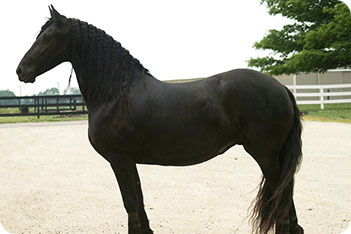
White Horse - Cherhill
From: Equestrian and Horse

Cherhill White Horse
The Cherhill White Horse is a type of geoglyph or hill figure which shows a large visual representation of a horse that has been created by cutting into a steep hillside and revealing the underlying chalk.
The art of carving white horses in chalk upland areas is also known as Leucippotomy.
Date Made
The White Horse at Cherhill was first cut into the hill in 1780 by Dr Christopher Alsop, of Calne.
Also Known As
The Oldbury White Horse.
Restoration
Restoration work is supported by the National Trust and Cherhill parish council.
In order to maintain the White Horse a process called scouring takes place, this strip off all the weeds and new chalk is often also added.
In 1935, the White Horse was dressed with a mixture of concrete and chalk and it was cleaned up again in 1994.
The horse underwent major restoration in 2002 by the Cherhill White Horse Restoration Group. The White Horse was resurfaced with approximately one hundred and sixty tonnes of new chalk and the beautiful outline of the horse was also re-cut.
Size - Its original size was 165 feet (50 m) by 220 feet (67 m).
Making Of A The White Horse - In order to make a White Horse first it must be designed. Once the design is known the turf can then be stripped away to follow the design which exposes the chalk hillside beneath and therefore creating the image in the ground that can often be seen from a fair distance away.
Travel
The Cherhill White Horse lies on a steep slope of Cherhill Down, Wiltshire, England.
- Train - The nearest railway station is Chippenham.
- Car - Cherhill lies upon the old coaching road, the A4, which runs from central London to Bristol.